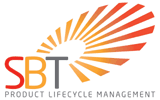Many brands rely on speed-to-market to gain maximum impact and capture vital market share. However, delays can occur and, increasingly, they happen in the design-to-print supply chain, which can drastically affect production time and speed-to-shelf. Fortunately, new technology is revolutionising the design-to-print process, ensuring a swift and efficient delivery.
The design-to-print stage of the product supply chain involves a number of complex techniques and processes that require input from many individuals, both internally and externally. Initially, designs are created by the agency and approved by various parties before they are turned into digital proofs. Artwork then enters the pre-press stage when colours, font, layout and copy are all adjusted by the reprographics agency to ensure that the design is ready for print. The artwork is then distributed again for sign-off. This usually happens a number of times until the final version is sent to the printers.
Typically, this is a time-consuming process as the printed artwork proof is distributed in the post and, in many cases, goes all over the world. Feedback is then marked on the sheet and returned. The agency must then amend the artwork, incorporating everybody’s comments, which is often a challenging task because of contradictory instructions, illegible handwriting and the inevitable delays in the postal service. This leads to different versions being commented on at different times. The complex nature of these procedures means that this part of the supply chain can be confusing and disorganised. With a lack of ownership mismanagement, confusion regarding delivery deadlines and an increasing number of amendments, the time-to-market for a product could extend to months past its due date.
In addition to severely affecting the profitability of the brand, an extended development period incurs costs, reduces staff productivity and delays the sales revenue from consumers who purchase the product.
Digitalising and reorganising
Recognising a gap in the market for a solution that streamlines the design-to-print supply chain, SBT developed ODIN. The advanced technology software solution creates an environment that promotes free-flowing communication, minimises errors and eliminates the duplication of work, resulting in an effective design-to-print process. With four functional modules to suit companies’ individual requirements, ODIN is a flexible user-friendly system that is easy-to-use and fits into an established workflow model. ODIN On Time, ODIN Sprint, ODIN Assets and ODIN Brand Toolbox can all operate as separate entities or work together to create a world-class brand management system that optimises speed of products to market and delivers real savings, within the branded packaging arena.
ODIN On Time reduces the common delays involved in the design-to-print process by giving the brand owner total control of the entire workflow and execution. Using this module brand owners have the transparency to monitor the up-to-date status of the launch process.
ODIN Sprint digitises the graphics lifecycle, providing the brand owner with online annotations, artwork approvals and amendments, so they can be made simultaneously – online – from anywhere in the world.
ODIN Assets enables existing resources to maximise their value and help turnaround products quickly and cheaply. It is a powerful, state-of-the-art storage and retrieval system that manages photography, logos, design briefs, advertisements, brand guidelines and graphics.
ODIN Brand Toolbox allows brand managers to automatically create a wide range of graphics for consistent ranges. At the touch of a button, users can alter a graphic to change the language, colour or image, simply creating multiple versions of the same brand.
Business benefits
Using ODIN, organisations can streamline their design-to-print supply chain to ensure transparency and co-ordination by one individual, giving project ownership. Once responsibilities are allocated, the team can see the update progress and ensure they meet their deadlines in a timely fashion. As such, ODIN software enables maximum employee productivity, and the efficiency of the design-to-print supply chain is maximised. This results in more products being turned around in a shorter time frame, reduced costs and enhanced profits – a win-win situation all around.
ODIN counts ASDA, Twinings, DANONE, Ryvita, Heinz and Kraft among its clients, who have benefitted from:
- Delivery of products to market quickly and cost-effectively
- Accessing up-to-date information anywhere 24/7
- A flexible, modular style system
- The removal of duplication
- Focusing on value-added functions
- ROI

